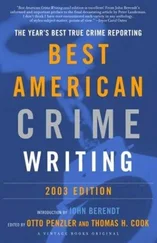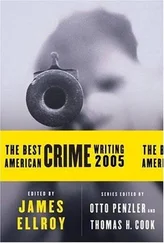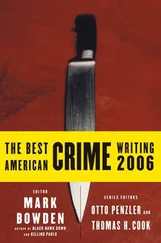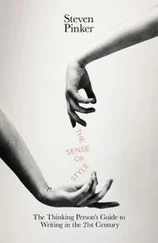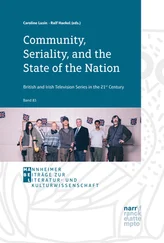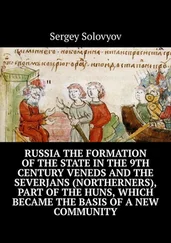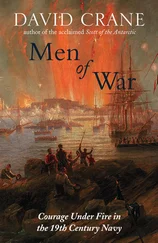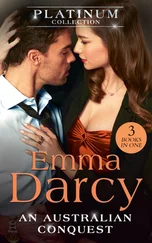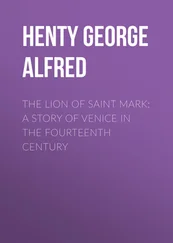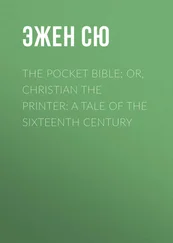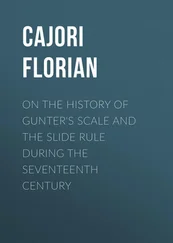David Latta - Sand on the Gumshoe - a century of Australian crime writing
Здесь есть возможность читать онлайн «David Latta - Sand on the Gumshoe - a century of Australian crime writing» весь текст электронной книги совершенно бесплатно (целиком полную версию без сокращений). В некоторых случаях можно слушать аудио, скачать через торрент в формате fb2 и присутствует краткое содержание. Жанр: Детектив, на английском языке. Описание произведения, (предисловие) а так же отзывы посетителей доступны на портале библиотеки ЛибКат.
- Название:Sand on the Gumshoe: a century of Australian crime writing
- Автор:
- Жанр:
- Год:неизвестен
- ISBN:нет данных
- Рейтинг книги:5 / 5. Голосов: 1
-
Избранное:Добавить в избранное
- Отзывы:
-
Ваша оценка:
- 100
- 1
- 2
- 3
- 4
- 5
Sand on the Gumshoe: a century of Australian crime writing: краткое содержание, описание и аннотация
Предлагаем к чтению аннотацию, описание, краткое содержание или предисловие (зависит от того, что написал сам автор книги «Sand on the Gumshoe: a century of Australian crime writing»). Если вы не нашли необходимую информацию о книге — напишите в комментариях, мы постараемся отыскать её.
Sand on the Gumshoe: a century of Australian crime writing — читать онлайн бесплатно полную книгу (весь текст) целиком
Ниже представлен текст книги, разбитый по страницам. Система сохранения места последней прочитанной страницы, позволяет с удобством читать онлайн бесплатно книгу «Sand on the Gumshoe: a century of Australian crime writing», без необходимости каждый раз заново искать на чём Вы остановились. Поставьте закладку, и сможете в любой момент перейти на страницу, на которой закончили чтение.
Интервал:
Закладка:

David Latta, Waif Wander, Fergus Hume, Earnest Favenc, E. W. Hornung, Randolph Bedford, Vince Kelly, Max Afford, Arthur Upfield, A. E. Martin, Carter Brown
Sand on the Gumshoe: a century of Australian crime writing

INTRODUCTION
Apart from Arthur Upfield, Carter Brown and Peter Corris most Australians would be struggling to name many other home-grown writers of crime and detective fiction. Yet there is in fact a long Australian tradition of crime writing. The new crop of Australian crime writers are just returning the genre to the popularity it enjoyed for a century from the 1860s.
Maybe our convict origins have something to do with it, maybe it’s just human nature to be entertained by stories of violence and greed and the darkness of the human soul. Whatever the case, from the nineteenth century on, dozens of Australian authors have ventured into the genre to satisfy a hungry local market.
Australia has a surprisingly rich and varied tradition of crime writing embracing with varied degrees of success such branches of the idiom as detective stories, thrillers, mysteries, police procedurals and even gothic adventures. For much of our history, we have followed the traditions of British crime fiction. In recent years, however, the hard-edged commentary of the United States has become dominant.
This progression is best reflected in the work of Upfield, Brown and Corris, authors who have achieved both critical and commercial success around the world and somehow avoided the obscurity that has befallen their counterparts. The work of the trio can indeed be viewed as a microcosm of the development of Australian crime literature. Upfield’s approach grew out of the English police procedural, reflecting Australia ’s long tradition as a British cultural colony. Brown in comparison was a rude shock. His work was brashly modern, harshly violent and thoroughly Americanised. By the time Corris began to write in the early 1980s the formula had mellowed but the United States remained the dominant influence. The development of Australian crime fiction has thus mirrored the country’s agonised struggle to forge a new cultural identity, no matter how derivative.
Arthur Upfield created a wholly unique Australian detective. Born of an Aboriginal mother and a white father, Detective Inspector Napoleon Bonaparte, better known as Bony, featured in 29 of the author’s 33 novels. From the first, The Barrakee Mystery (London, Hutchinson, 1929; as The Lure of the Bush, New York, Doubleday, 1965) to the last, The Lake Frome Monster (London, Heinemann, 1965), completed after Upfield’s death, Bony has endured.
British-born Upfield came to Australia in 1911 and worked for many years in the outback. He was among other occupations, a station hand, a boundary rider and a prospector, who distilled his love of the far country into his novels. Upfield’s keen eye for detail and his ability to generate an Australian atmosphere kept fans around the world satisfied long after Bony captured his last villain.
To contemporary readers, Upfield’s treatment of his Aboriginal characters smacks of racism, but his writing was, of course, a product of his time. Thus in The Lake Frome Monster he describes a half caste as having not enough of the white race in him to produce staple honesty and too much of the black race to permit freedom from aboriginal superstition. Yet Upfield delighted in extolling the individual superiority of Bony above all races. It is Bony who is assigned the toughest cases. He plays the part of labourer, itinerant worker, even swagman, to crack a case and, in a telling allusion to his ambiguous position in Australian society, prefers to work anonymously and alone.
Patience, as Bony cheerfully admits, is his greatest asset. He can solve a case in two weeks or it can take two years. He never fails and his exceptional talents reinforce his enormous self regard. As he comments in Wind of Evil (Sydney, Angus & Robertson, 1937; London, John Hamilton, 1939; New York, Doubleday, 1944), ‘I admire murderers immensely – almost as much as I admire myself.’
Bony first appeared during the so-called ‘golden age’ of crime writing, the period between the two world wars which produced authors such as John Dickson Carr, R. Austin Freeman, S.S. Van Dine, Agatha Christie, and Dorothy Sayers, a time when the manufacture of mystery relied far more on the inherent puzzle than considerations of character and plot. This was the era of genteel murders in locked rooms where detectives and their suspects were all bound by the conventions of rigid social codes.
Upfield’s locales were a little light on drawing rooms and evinced a shocking paucity of butlers. Yet his approach had much in common with the conventions of the ‘golden age’ practitioners. Bony’s cases occurred in small, rural communities, just the type of closed universe that the locked room mystery depended upon. There were a finite number of suspects and the guilty party (or parties) was always among them. Most importantly, while Upfield disguised some of the more vital clues from the reader, he invariably adhered to the conventions and played fair.
Upfield’s novels sold well in both Great Britain and Australia but his lasting success was not established until 1943 when his novels began to be released in the United States. Beginning with Death of a Swagman (New York, Doubleday, 1945; London, Francis Aldor, 1946; Sydney, Angus & Robertson, 1947) the majority of the Bony books were first published in the United States. Anthony Boucher, in The New York Times Review of Books, described Bony as the most original fictional detective of the last 20 years’ and Upfield became the first Australian to be admitted to the Mystery Writers’ Guild of America. Upfield’s novels were translated into German, Italian, Dutch, Spanish and Japanese and still support a thriving international fan club of the Bony faithful.
If Upfield was prolific then Carter Brown (the pseudonym of Alan Geoffrey Yates) was positively fecund. The extent of his output remains open but bibliographical sources suggest a minimum of 190 and a maximum of 325 novels. Beyond dispute is Carter Brown’s position as a dinky-di literary phenomenon. Yates, for all his energy, worked in that corner of the genre that even now receives little serious attention in literary circles. Apart from a passing cultish curiosity in the early 1980s when Yates’ autobiography was published and a musical made from his novel, The Stripper (Sydney, Horwitz, and New York, New American Library, 1961; London, New English Library, 1962) he has never achieved the recognition that the quality of his writing and its sheer volume deserved.
Yates fed the market for pulp fiction with a startling energy. The numerous Carter Brown detectives occupied mythologised American settings, despite the fact that Yates had little practical knowledge of the United States until quite late in his career. Thus, one Carter detective, Al Wheeler, worked in a fictional Californian city near Los Angeles, and another, Randy Roberts, came from San Francisco. Yates’ characters inhabited the same bleak, violent landscape that Hollywood had been manufacturing under the label of film noir for decades. Yates’ writing was like the romantic, dream landscapes fashioned by the early Black Mask-style writers, a style which continued into the post 1945 period. This style had much in common with the Westerns and the cowboy epics of popular literature in that it enhanced the traditional struggle between good and evil. The heroes of such stories were fine men (and occasionally women) hardened but not seduced by the evil they faced. They reacted to violence in order to save the society they were sworn to protect.
Читать дальшеИнтервал:
Закладка:
Похожие книги на «Sand on the Gumshoe: a century of Australian crime writing»
Представляем Вашему вниманию похожие книги на «Sand on the Gumshoe: a century of Australian crime writing» списком для выбора. Мы отобрали схожую по названию и смыслу литературу в надежде предоставить читателям больше вариантов отыскать новые, интересные, ещё непрочитанные произведения.
Обсуждение, отзывы о книге «Sand on the Gumshoe: a century of Australian crime writing» и просто собственные мнения читателей. Оставьте ваши комментарии, напишите, что Вы думаете о произведении, его смысле или главных героях. Укажите что конкретно понравилось, а что нет, и почему Вы так считаете.

